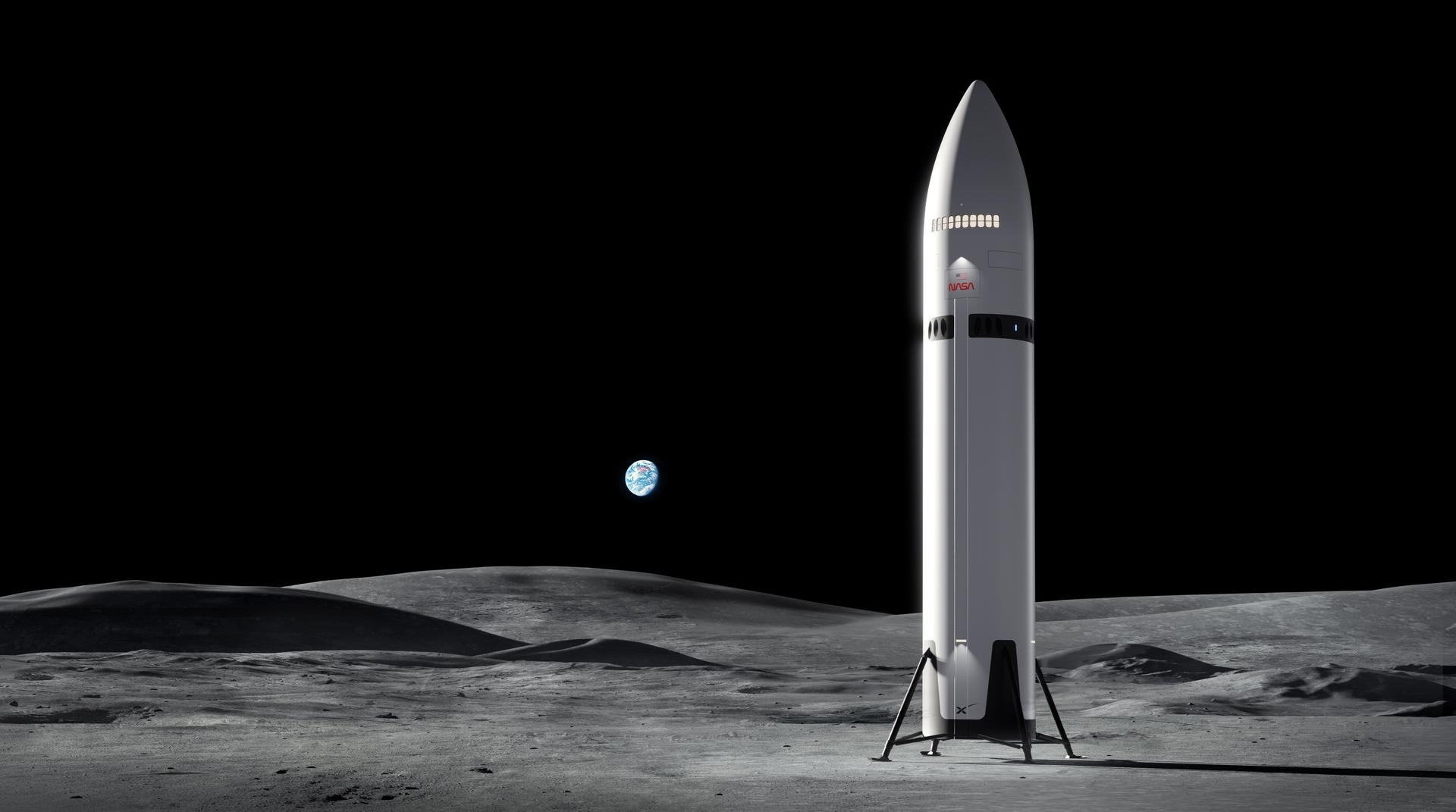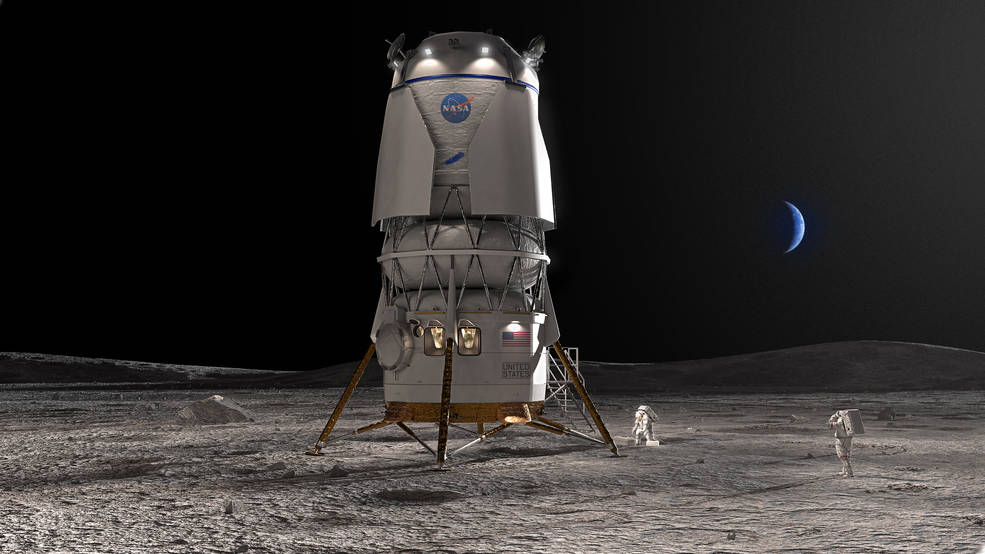About Human Landing Systems Development
The Human Landing System (HLS) is the mode of transportation that will take astronauts to the lunar surface as part of the Artemis program. The program is managed at Marshall Space Flight Center in Huntsville, Alabama. Crews will board the HLS in lunar orbit and descend to the surface where they will collect samples, perform science experiments, and observe the lunar environment before returning to orbit in the HLS.
Artemis missions are uniquely focused on expanding our knowledge of and establishing a long-term human presence on and around the Moon. To achieve these goals, NASA is focusing on landing sites around the South Pole, establishing a lunar orbiting platform called the Gateway, and increasing surface expedition durations. Human landing systems of the Artemis era will need to be equipped to meet the challenges of complex missions. Required capabilities include docking with multiple systems, landing in a range of geographic regions, and acting as a crew habitat on the surface for the duration of early expeditions.
To best meet mission needs, NASA is working with U.S. industry to develop Artemis lunar landers. This allows NASA to share its knowledge and maintain oversight of safety, while companies develop, test, and iterate on designs. Below is more information on how NASA and its partners are developing these systems.
Initial Human Landing System

NASA awarded a contract to SpaceX of Hawthorne, California, for its Starship HLS that will put the first Artemis astronauts on the Moon. NASA and SpaceX teams are working together to ensure the company’s design meets all of the mission and safety requirements. SpaceX will perform one uncrewed demonstration mission prior to use of their system on the Artemis III mission, the first human surface expedition since 1972.
To learn more about development of the initial human landing system, please visit this page.
Sustaining Lunar Development
In its work toward a regular cadence of astronaut Moon landings, the agency is pursuing multiple human landing system providers. This approach will increase competition, reduce costs to taxpayers, support a regular cadence of lunar landings, further invest in the lunar economy, and help NASA achieve its goals on and around the Moon in preparation for future astronaut missions to Mars. NASA currently has work on contract with SpaceX and Blue Origin to develop landing systems that meet the agency’s requirements for recurring services, such as the ability to dock with Gateway for crew transfer, increased crew size, and more mass to the surface. Using NASA’s unique and historic experience in lunar exploration, paired with the expertise and innovation of industry partners, this work will ensure NASA can reach the long-term goal of continuous missions.
To learn more about Sustaining Lunar Development, please visit this page.
Sustainable Human Landing System: Studies and Risk Reduction
After the first mission to the lunar surface, NASA will continue working to ensure continuous human landing system services are available to support the agency’s goal of frequent and regular lunar surface missions. To reduce the risk of developing these types of systems, and to learn more about how best to develop them, NASA has partnered with five companies who are studying these topics.
Blue Origin of Kent, Washington; Dynetics (a Leidos company) of Huntsville, Alabama; Lockheed Martin of Littleton, Colorado; Northrop Grumman of Dulles, Virginia; and SpaceX of Hawthorne, California, are each developing unique lander design concepts and evaluating the design, projected performance, construction standards, mission assurance requirements, interfaces, safety, crew health accommodations, and medical capabilities of their concepts. These efforts, along with NASA’s continued refinement of requirements, will result in additional capability for recurring operations including increased crew size, increased lunar descent and ascent mass, and longer stays on the lunar surface.
To learn more about this work, please visit this page.




























